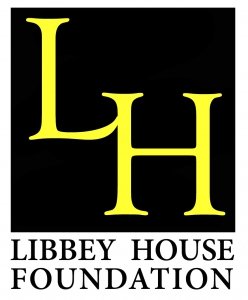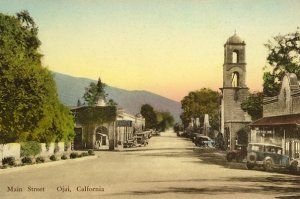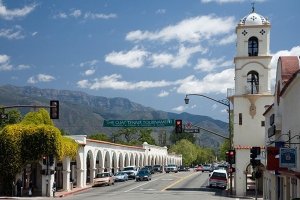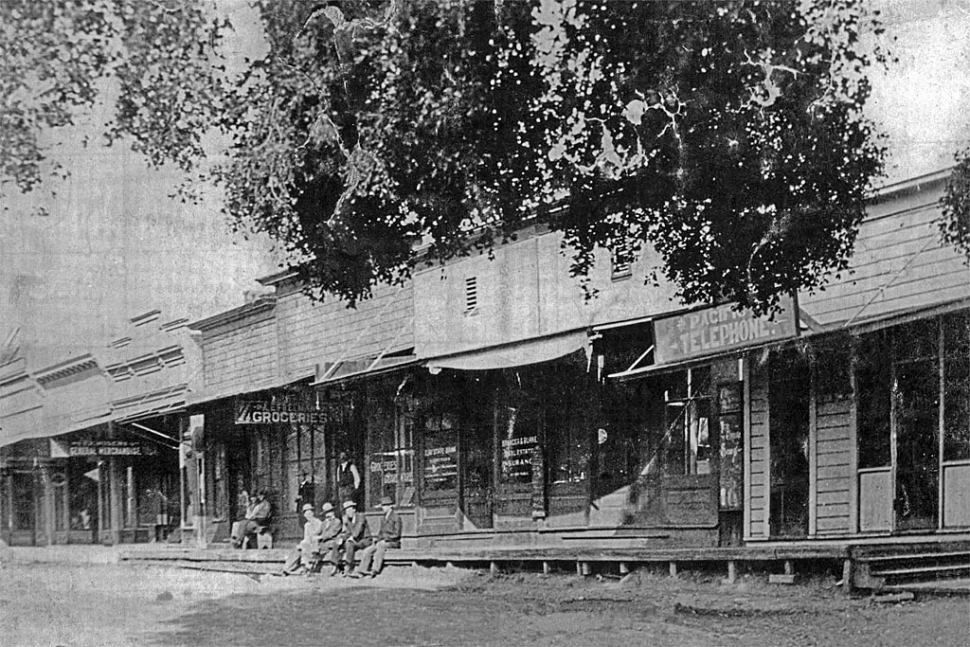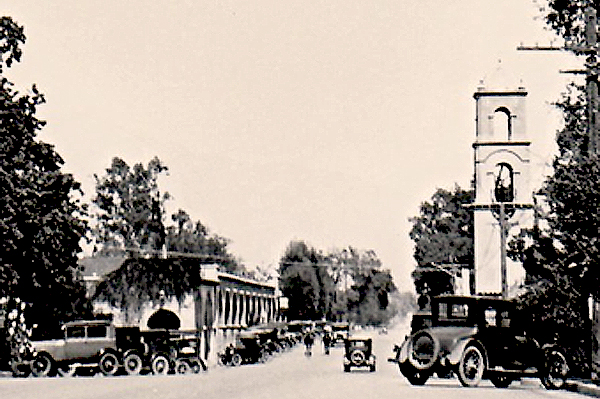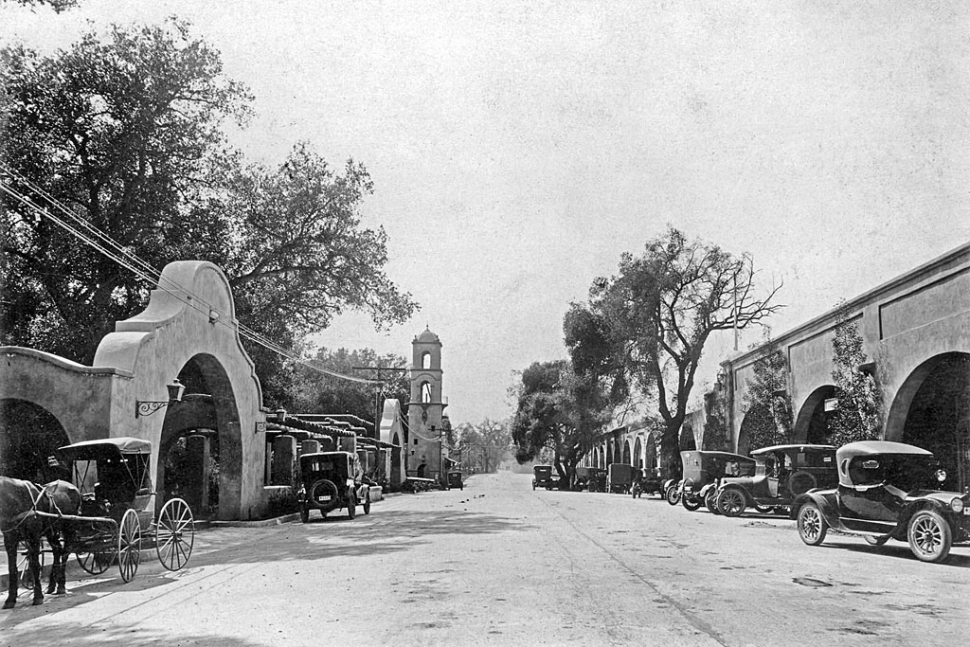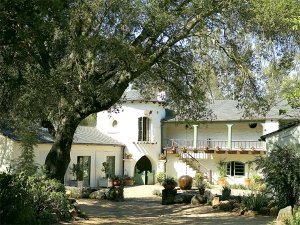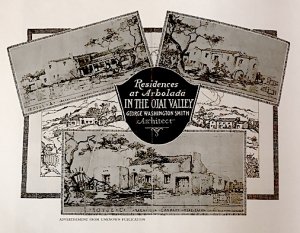The Man Who Transformed Ojai, California
The Arcade c. 1917
The Arcade c. 2017
Possessing a rare combination of idealism and practicality, Edward Drummond Libbey took his community building spirit and created what is now known as downtown Ojai. Mr. Libbey had come to the Ojai Valley in 1908 to spend a winter vacation at the new Foothills Hotel, on the recommendation of his friend Harry Sinclair. The natural beauty of the valley captivated him, and he returned year after year to enjoy its rustic charm. Invested as a local landowner by 1916, Libbey held progressive conferences with civic leaders in the town of Nordhoff, California, including Sherman Thacher, Walter Bristol, John J. Burke, and Harry Sinclair. Mr. Libbey made no specific promises at these meetings, but indicated that he was interested in helping wherever he could.
Main Street c. 1850 (Ojai Avenue) Nordhoff, CA – Ojai Valley Museum Photo Archive/Permanent Collection.
The Arcade c. 1918 (Ojai Avenue) Ojai, CA – Ojai Valley Museum Photo Archive/Permanent Collection
The Arcade
Together, these men hired San Diego architects Richard Requa and Frank Mead for suggestions to make Norhoff a distinctive, cohesive and beautiful town.
By 1917, the required money was raised and architect Requa’s plans for Nordhoff’s main street became reality. The town’s commercial center was unified by a mission style arcade extending the length of one city block on the north side of Ojai Avenue as proposed by Requa. With the arcade transformation, Spanish-style architecture became the signature architectural theme throughout the town. When his plans were shown to the merchants of Nordhoff, Libbey offered to underwrite the cost of the arcade if the merchants would contribute $10 a front foot toward the cost. When, on the completion of the arcade, several of the merchants defaulted on their payments, Libbey quietly assumed their debts himself.
Meanwhile, having acquired title to all the land on the south side of Ojai Avenue, Libbey set about transforming it into something that would enhance the beauty of the downtown district. He ordered the razing of the decaying buildings that occupied the property, and had the area cleared of everything but its majestic oak trees. At the corner of Signal street and Ojai Avenue, the original post office was built with its landmark tower, designed by Requa, and constructed by Robert Winfield, who was brought from San Diego to execute Requa’s plans. In another part of the property were established the first of the tennis courts which were to bring such fame to Ojai. Libbey proposed to donate all of this as a gift to the people of the Ojai Valley.
Mr. Libbey, pleased with the final aesthetic result, re-named the town Ojai, saying: “There has been too little attention paid to things aesthetic in our communities and our homes. The time has come when we should encourage in ourselves, thoughts of things beautiful … and also of higher ideals which encourage and promotes in the people the fostering of love of that which is beautiful and inspiring.”
The Arbolada
Libbey’s contributions to the development of Ojai were not limited to the central area of the town. One of his early land acquisitions had been several hundred acres of wooded area that lay south of the Foothills Hotel in order to save the trees from the clear cutting done by the growing railroad industry. There, on the east side of Foothill Road near Fairview, he built a craftsman bungalow as his winter home in 1911. Across the road he erected wrought iron gates to serve as an entrance to an area which was first known as Libbey Park, and later renamed The Arbolada, meaning “woodland”. Within the Arbolada, in 1923, he built a 7 acre horse ranch with a blacksmith, stables, barn, and out buildings.
In 1922, Libbey employed gangs of men to clear the underbrush from beneath the oaks, and proceeded to install winding roads with curbs lined by native stone throughout the area, saving all of the largest oaks. He had three homes built in authentic rural Spanish architecture to set the tone of the development. Friends of Libbey, such as Edward Ford, were invited to purchase the first parcels of land in the park and erect homes whose architecture was carefully checked for its harmony with the surroundings. The area was later opened to the public for the purchase of lots, and happily, Mr. Libbey’s standards of construction have been consistently maintained.
In 1923, the Ojai Valley School was the recipient of a gift of land in the Arbolada area from Mr. Libbey, and in the same year he planned and financed the Ojai Valley Golf Course and Club House to create the amenities necessary to create a livable community.
Libbey’s accomplishments in the preservation and enhancement of the beauty of the Ojai Valley remain as living monuments to his unselfish idealism.
Libbey Ranch
Arbolada c. 1922
